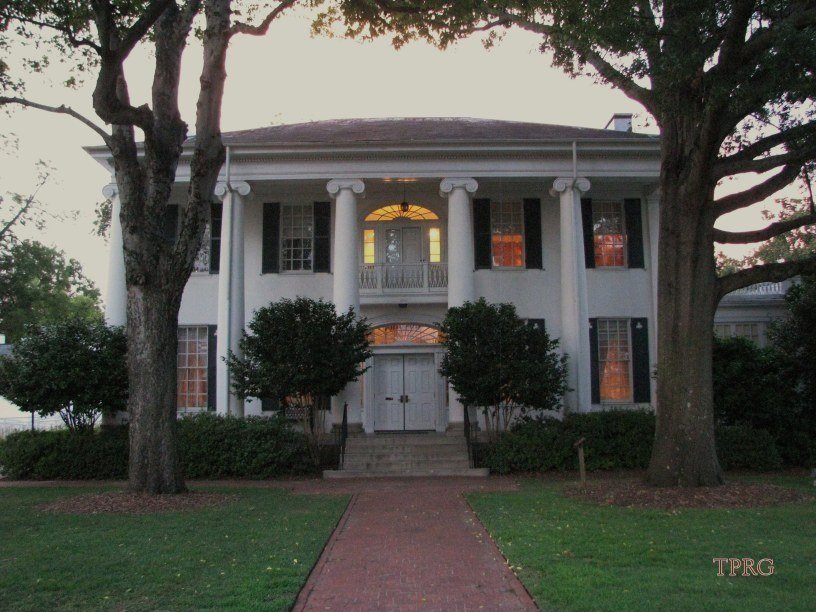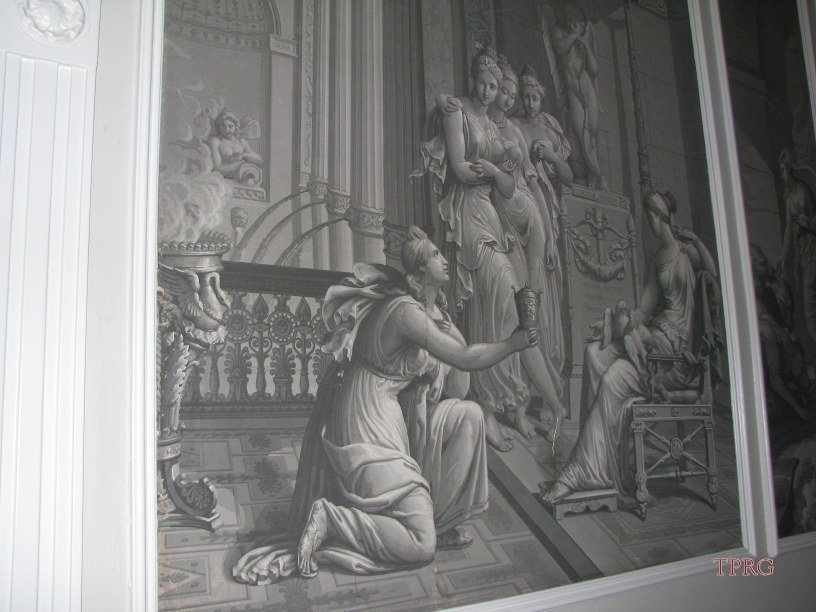The University Club



















































Case #10-201 | April 30, 2010 7:30pm – 2:00am | Tuscaloosa, Alabama
History
The University Club, is an historic aspect of Tuscaloosa life. In March, 1819, the land on which the University Club now stands was reserved by the Congress of the United States as part of a donation to endow “a seminary of learning” for the state of Alabama. By December of that year, the trustees of the University had sold this land to finance the building of the University. The purchaser was R. H. Walker. Walker sold the property to Hobson Owen, who in January, 1834, sold it to James H. Dearing, a steamboat captain and member of the Alabama Legislature. Dearing spent $14,000 to erect the magnificent structure that continues to maintain its position of imposing authority on University Boulevard by architect William Nichols. The house had the same general appearance it has today, although it had no sun porch on the south side, and in the center of the roof there was a square platform from which the smoke of the river boats could be seen as they approached the town bringing supplies from Mobile. The kitchen stood on the north side, separate from the house but connected by a covered walk to the north porch.
The Dearings lived only two years in this beautifully planned home because students from the University would help themselves to their chickens and fruit and ruined Mr. Dearing’s cherished flowers. In 1836, Dearing sold his original home to Richard H. Lewis for $14,500.
In March 1838, Lewis sold the house to the Governor, Arthur Pendleton Bagby for $10,000. Bagby, who was governor from 1837 to 1841 .Because he didn’t have residence, the home he purchased came to be known as the Governor’s Mansion. As far as is known, he was the only governor who occupied the structure while Tuscaloosa was the state capital.
In 1843, Bagby sold the house to the Reverend Benjamin Sykes for about $8,000.Rev. Sykes passed away two years later, but his widow and children continued to occupy the home. In January 1851, Augustus Sykes, a brother of Benjamin, bought the house for about $6,000.
In 1852, Richard N. Harris purchased the property. In February, 1871, Henderson M. Somerville, who was married to Harris’ daughter, Cornelia, purchased the shares inherited by his wife’s siblings. Judge Somerville, the founder of the University of Alabama Law School was a Justice of the Alabama Supreme Court. The home remained with the Somervilles until April of 1900 when Dr. James L. Williamson purchased it. Dr. Williamson owned the property until 1922, when Dr. S.E. Deal acquired it for about $16,500. Dr. Deal made additions to the house under the direction of architect David Whildin. These additions included a sun parlor, a second story to the east wing, central heating. The property remained in the Deal family until Dr. J. M. Forney purchased the house in May, 1939. Dr. Forney used the buildings as an office until World War II when he entered the service. The house became, for a short time thereafter, the Tuscaloosa Service Center where thousands of servicemen were entertained during the war.
In April 1944, University President Raymond Paty, convinced Mr. and Mrs. H. D. Warner to help the University in acquire the home for faculty and staff for social gathering and meetings. The Warners, helped furnish this architectural jewel and presented it to the University of Alabama for its University Club menage.
President Paty appointed a committee composed of Professor W. C. McCoy, Dear Martin ten Hoor, Mr. Gordon D. Palmer, Mr. H. D. Warner and Mr. Jeff Coleman to organize the University Club. Mr. Coleman served as temporary chairman of the committee. In addition, Mr. C. H. Penick, University of Alabama Attorney, assisted the committee in preparing a constitution and a charter., and in early 1946 the house was opened as the University Club.
By 1957 the popularity of the club was well established. Use of the structure increased until a new dining room was added and the kitchen was enlarged. In 1967, the building was again redecorated. The Warners contributed $10,000 for these improvements.
During the 1970’s, Jack Warner, son of Mr. and Mrs. H. D. Warner, oversaw further improvements and decorative embellishments. Under Mr. Warner’s direction interior changes were made to the second floor of the building resulting in a new bar, ladies and gentlemen lounges, and a “Taproom Smoker”. Warner pursued a Steamboat-Gothic theme for these changes and gathered antiques, paintings, and artifacts from across America to create the present second floor. The Warners continue to show great interest in the club and often contribute or loan additional pieces of art and furnishings.
SUMMARY
Reports of Paranormal activity include smell, full apparitions, and unexplained noises, being watched. During the night we had many interesting EMF detections, with several spikes.
EQUIPMENT
Digital cameras, Digital Voice Recorders, Sony Handycams with the Nightshot feature, EMF Meter, Infrared Digital Temperature Scanner, K2 meter, Extech Humidity and Temperature USB Datalogger RHT10, Zoom H2 Recorder, Mel-Meter, 4 IR Camera DVR System, The PX, Wireless Microphone.